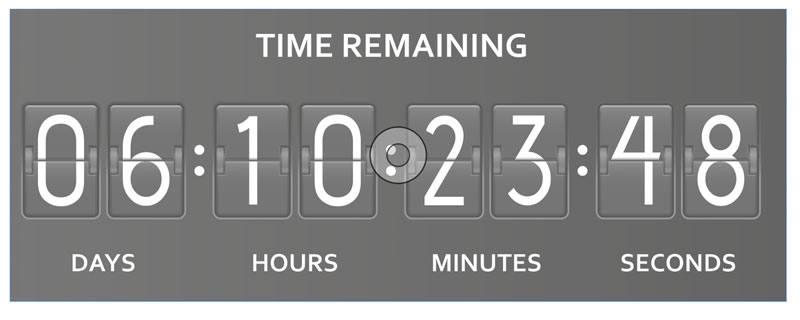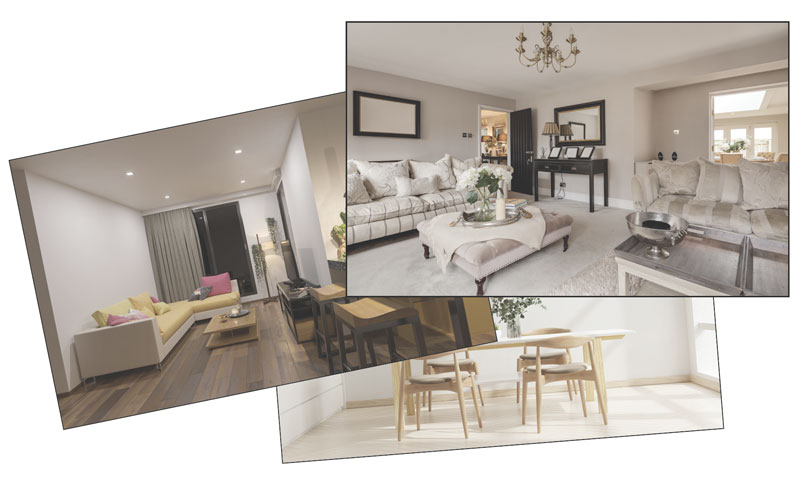Scheduling appointments in advance with shoppers at multiple points
throughout the sales process has proven to substantially increase close
rates.
Retail close rates in the furniture industry vary between 10% and 60%. It’s
a metric affected by a number of factors, including a retailer’s processes,
selling and merchandising strategy, display, store locations, pricing,
financing choices, customer loyalty and salesperson professionalism.
However, one retail practice that produces higher closing rates and
additional opportunities, irrespective of these other factors is scheduling
appointments.
Focusing on scheduling creates situations where salespeople make
appointments with customers throughout the sales process. Ideally, time
slots should be synced in customer’s and salespersons’ calendars with the
parties agreeing on common meeting objectives.
Opportunities that are scheduled in this way typically produce close rates
of over 80%. Note that retailers who use software that syncs to their
customer database, multiple mobile devices and calendar platforms find it
easier to get more of these appointments.
Calendar scheduling produces higher close rates because it places value on
both the customer’s and the salesperson’s time. Respect for time shows the
commitment and professionalism of each party, be they a prospect or
customer, salesperson or designer.

“I recommend combining personalized, automated and manual follow-up for
maximum impact. Automated follow-up can be scheduled with a CRM workflow
manager.”
Ten Events to Schedule
-
Schedule in-store visits: Big sales happen when a
proper fact-finding conversation occurs between a prospect and a lead
manager before scheduling an in-store appointment. When information is
gathered in advance, an invitation can be set for an in-store meeting
with a salesperson. The lead manager’s goal at the start should be to
either book a visit or take an order. Be a professional furnishings
concierge.
-
Schedule in-home visits. We all know shoppers working
on big projects don’t always buy on their first store visit. Customers
often need more time, help and follow-up to make buying decisions. It is
no secret that home visits produce the highest average sales and very
high close rates. Consider how the steps of a scheduled in-home visit
often occur:
-
The salesperson or design associate makes a simple room sketch while
the customer is in-store on a first visit.
- Goals and desires are determined.
-
The customer indicates that the purchase is premature, giving valid
reasons.
-
The salesperson proposes an in-home visit to discuss additional
details and then schedules the visit.
-
Schedule to close back at the store. If necessary, once
the customer’s situation is better understood during a home visit,
measurements are made, pictures are taken, and needs are determined. The
next step is to make some final choices and close the sale. If this
final step needs to be done in the store, schedule it ASAP! However,
retailers that have the technology resources can often complete the
sales transaction right in the customer’s home. Either way, the path
toward finalizing the sale will move faster if meetings are scheduled
and entered in the calendars of the concerned parties.
-
Schedule the be-back. Only some customers need or want
to schedule an in-home visit or purchase on their first visit to a
store. Shoppers may need to go home to measure or collect additional
information. Given this reality, the next best thing to closing a sale
today is to close it tomorrow. To more effectively enable this,
scheduling be-back visits on a digital booking calendar will produce
much higher close rates.
-
Schedule agreed-upon follow-up. It is human nature to
relegate non-emergencies to the future. Therefore, it’s much more likely
that all the steps necessary to close a sale will happen if they are
entered into a reminder system with due or deadline dates. Similar to
scheduling a be-back appointment, if there is agreed-upon follow-up,
such as measuring or reviewing samples, a time should be set in a
digital calendar. This helps reduce the odds of either party forgetting
and having to play a time-wasting telephone tag game. A booking calendar
and/or task manager also allows managers to track what their salespeople
do without going through lots of paperwork.
-
Schedule the open-sale follow-up. If a delivery date is
not scheduled when writing up an order, salespeople should schedule at
least one post-written-sale follow-up to touch base before delivery.
These personal courtesy calls are appreciated and present an opportunity
to offer additional products and services, such as product protection,
not included on the original ticket.
-
Schedule a post-delivery room review. How often do
your salespeople have an opportunity to see the end results of their
sales efforts.? If the answer is hardly ever, your store is missing out
on an excellent opportunity to build credibility and customer loyalty. A
best practice is for salespeople to schedule a time to review pictures
of newly furnished rooms taken by their customers. Or, in stores that
offer design services, in-home follow-up visits can be scheduled. Either
way, decorating hints to make customers’ rooms even better can be
offered by suggesting accessories, lighting, rugs, window coverings,
accents, or even just a simple rearrangement. This practice will elevate
the value provided to customers.
-
Schedule the next purchase discussion. Customers often
buy hope furnishings in phases and over time. It’s therefore useful to
discover the probable timing of next purchases so follow-up can be
scheduled. A digital survey is an excellent way to find out when
customers may be in the dreaming stage of their next home improvement
project. This survey or recorded statement can provide the information
needed to get more customers back to shop for their next project before
they shop elsewhere. Ask “What is your next dream home furnishings
project, and what’s your timeline, if any, for making this project a
reality?” Entering this information into a CRM organization system
provides salespeople with reminders they need to do relevant follow-ups.
Know this: relevant and timely communications get attention, while less
relevant and timely messaging gets ignored.
-
Schedule past-purchase follow-up. Home furnishing
customers spend, on average, a couple of thousand dollars per
transaction. They deserve follow-up calls to show that your store and
your salespeople care about them and their purchase satisfaction level.
Salespeople should schedule times for follow-up with customers to
discuss past purchases. Some retailers, however, fear that making these
calls will encourage customers to complain about problems, increasing
service costs. I believe that’s short-term thinking. Better
communication and service is a proven way to build better relationships,
future traffic, referral business and profitability. I recommend
combining personalized, automated and manual follow-up for maximum
impact. Automated follow-up can be scheduled with a CRM workflow manager
that triggers an email sent under the salesperson’s name. Individual
salespeople should use calendar reminders so they are sure to make
personal calls to customers at the appropriate times.
-
Schedule for private events. Plan a special,
non-advertised weekday event and make it fun. As well as good sales
leadership, the key to the success of any private event is to require
sales associates to schedule a minimum number of customer appointments.
This usually ranges between three and six per salesperson for a one-day
event. When done correctly, I’ve seen closing rates of 95% and greater
than normal average sale numbers. If you have the work ethic and
technology, doing this can add some serious volume.

“A best practice is for salespeople to schedule a time to review pictures of
newly furnished rooms taken by their customers.”
Conclusion
Some of you may be concerned that all this scheduling and follow-up becomes
a lot of work. Think of it this way: What will it be worth to your business
to significantly increase the number of selling opportunities and close more
of them? Every prospect or customer touch point of value is a selling
opportunity. By consistently executing some or all of the scheduling
practices described in this article, you will sell more, provide a better
customer experience, and grow faster than your competitors. I highly
recommend investing in the necessary technology, performing best practices,
and working to achieve a higher close rate.